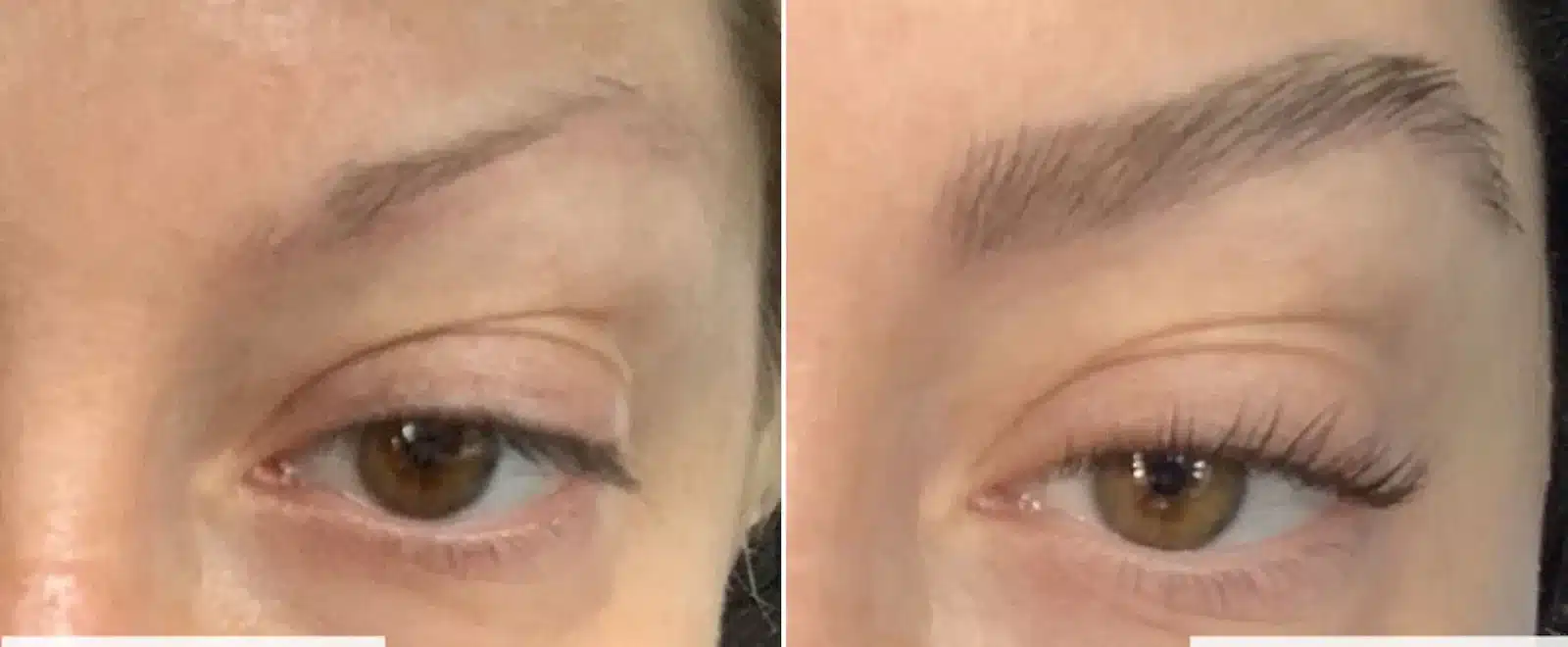Table of Contents

Eyebrow Transplant in Turkey: Everything You Need to Know Before You Go
Eyebrows are one of the most defining features of the face. They frame the eyes, shape the face, and express emotion. But for many people, thin, patchy, or uneven brows can be a frustrating concern. Whether it’s due to genetics, over-plucking, scarring, or medical conditions, eyebrow loss affects both men and women alike. That’s where an eyebrow transplant in Turkey comes in.
With modern surgical techniques and some of the best clinics in the world, Turkey has become a top destination for eyebrow hair transplant procedures. If you’re looking for a permanent solution that delivers natural-looking results, this guide will walk you through everything—from what to expect, how it works, the costs, benefits, and more.
If you’re considering gastric bypass, this guide covers everything—from surgery types and preparation to recovery and cost comparisons. Let’s dive in.
Time in Turkey
7 to 14 days
Surgery Time
2 to 5 hours
Hospital Stay
1 to 3 days
Recovery
2 to 6 weeks
Accomodation
4/5* Hotels
Transportation
Private Driver
What is Eyebrow Transplant in Turkey?
An eyebrow transplant in Turkey is a cosmetic procedure where hair follicles are taken from another part of the body (typically the back of the scalp) and implanted into the eyebrow area. The goal is to restore fullness, shape, and symmetry to the brows.
The procedure is performed under local anesthesia and typically takes 2 to 4 hours, depending on the number of grafts needed. Once the follicles are transplanted, they begin to grow new hair naturally—just like your original brows.
Turkey has gained global recognition for offering this procedure at a fraction of the price compared to Western countries, without compromising on quality or safety.
Types of Eyebrow Transplant
There are mainly two types of techniques used for eyebrow hair transplant procedures in Turkey: Follicular Unit Extraction (FUE) and Direct Hair Implantation (DHI). Both techniques offer excellent results, and the choice between them depends on the patient’s specific needs, desired outcome, and the surgeon’s recommendation:
FUE (Follicular Unit Extraction)
This is the most common method. Individual hair follicles are extracted from the donor area and carefully implanted into the eyebrow area. It allows for a very precise and natural-looking result.
DHI (Direct Hair Implantation)
This method involves using a special tool (a Choi Implanter Pen) to implant the hairs directly without creating recipient incisions first. It allows for better angle control and denser placement, making it ideal for delicate eyebrow areas.
How Is the Blepharoplasty Procedure Done?
Blepharoplasty, also known as eyelid surgery, is a cosmetic or functional procedure designed to remove excess skin, fat, and muscle from the upper and/or lower eyelids. It can help correct droopy eyelids, puffiness, and under-eye bags.
Here’s how the procedure is typically performed:
Step-by-Step Process:
1. Initial Consultation and Eye Evaluation
■ A plastic surgeon evaluates your eyelids, facial symmetry, and vision concerns
■ Medical history and goals are discussed
■ A personalized surgical plan is created
2. Anesthesia
■ The procedure is usually done under local anesthesia with sedation
■ General anesthesia may be used for more complex cases
3. Incision and Tissue Removal
■ For upper eyelid surgery, incisions are made along the natural crease of the eyelid
■ For lower eyelids, the incision may be just below the lash line or inside the eyelid (transconjunctival)
■ Excess skin, fat, and muscle are trimmed or repositioned
4. Closing the Incisions
■ Fine sutures are used to close the incisions
■ These are typically removed after 5–7 days
5. Recovery
■ Mild swelling and bruising last for 1–2 weeks
■ Final results become visible after several weeks
■ Most patients return to normal activities within 7–10 days
2. Eyebrow Transplant in Turkey – How It’s Done
An eyebrow transplant is a cosmetic procedure that restores or thickens eyebrows using your own hair—usually harvested from the back of the scalp.
Step-by-Step Procedure in Turkey:
1. Consultation and Eyebrow Design
■ You’ll discuss your eyebrow goals with the surgeon
■ Photos and facial proportions help design the ideal eyebrow shape
■ The donor area (usually behind the head) is examined
2. Anesthesia and Preparation
■ Local anesthesia is applied to both donor and recipient areas
■ The treatment area is cleaned and marked
3. Hair Extraction (FUE Technique)
■ Hair follicles are extracted using FUE (Follicular Unit Extraction)
■ Grafts are carefully selected to match eyebrow texture and angle
4. Graft Implantation
■ Tiny incisions are made in the eyebrow area
■ Grafts are implanted one by one with great precision to mimic natural growth
■ The entire process takes 2–4 hours, depending on graft count
5. Recovery and Results
■ Minor redness and scabbing occur for the first week
■ Transplanted hairs may shed after 2–3 weeks (normal process)
■ New permanent eyebrow hair begins to grow in 3–4 months
■ Full results are typically visible by 6–9 months
Why Turkey for These Procedures?
Turkey is globally recognized for affordable, high-quality cosmetic procedures with:
■ Board-certified plastic surgeons
■ JCI-accredited clinics
■ English-speaking staff and coordinators
■ All-inclusive packages (surgery + hotel + transfers)
■ Short wait times and fast recovery plans
Why is Turkey a Popular Destination for Eyebrow Transplant?
Turkey has become the go-to destination for eyebrow transplant surgery, and for good reason. The country is home to highly skilled surgeons, state-of-the-art medical facilities, and competitive pricing that makes the procedure more accessible. In addition to affordability, Turkey offers all-inclusive medical tourism packages, including accommodation, transportation, and post-procedure care. Patients also benefit from advanced techniques, such as FUE (Follicular Unit Extraction), ensuring natural and long-lasting results. With its combination of expertise, innovation, and affordability, Turkey continues to attract individuals seeking high-quality eyebrow transplants:
1. World-Class Surgeons
Turkish surgeons are internationally trained and highly skilled in hair restoration procedures. Many of them perform thousands of transplants each year with outstanding results.
2. Affordable Pricing
The cost of living and healthcare is lower in Turkey, which allows clinics to offer high-quality services at much more affordable rates than Western countries.
3. Modern Medical Facilities
Clinics in Istanbul, Ankara, and Izmir are equipped with the latest technologies and meet international medical standards.
4. Medical Tourism Infrastructure
Turkey is a leader in medical tourism. Clinics offer packages that include airport pickup, accommodation, translation services, and follow-up care—all in one smooth experience.
5. Quick Scheduling
Unlike the long waiting times in some countries, patients can often schedule a consultation and surgery within days.
Befor & After Eyebrow Transplant in Turkey




Eyebrow Transplant in Turkey Cost vs. Other Countries
Eyebrow hair transplants have become an increasingly popular solution for individuals looking to enhance or restore their eyebrows. Whether due to over-plucking, medical conditions, or natural thinning, many people seek this procedure to achieve fuller and well-defined brows. The cost of an eyebrow transplant varies significantly depending on factors such as the clinic’s location, the surgeon’s expertise, and the technique used. Below is a comparison of average eyebrow transplant costs in different countries to help you understand the potential expenses involved. Here’s a comparison of average eyebrow transplant costs:
Country | Average Cost (USD) |
Turkey | $1,000 – $2,000 |
USA | $4,000 – $6,000 |
UK | £3,000 – £5,000 |
Canada | $4,500 – $7,000 |
UAE | $5,000 – $7,500 |
As seen above, eyebrow transplant cost in Turkey is significantly lower, often including consultation, surgery, hotel stay, and post-op care in one all-inclusive package.
Choosing the Right Clinic and Surgeon in Turkey
When choosing an eyebrow transplant clinic, consider the expertise of the doctors and the advanced techniques they use. Check patient reviews and before-and-after results to ensure quality outcomes. Additionally, make sure the clinic offers professional consultations tailored to your needs:
1. Board-Certified Surgeons – Ensure the clinic has qualified and experienced surgeons who specialize in hair restoration and are certified by reputable medical boards.
2. Experience with Eyebrow Transplants – Look for a clinic that has extensive experience specifically with eyebrow transplants, as the procedure requires precision and artistry.
3. Real Patient Testimonials and Before & After Photos – Reviewing patient experiences and seeing actual results can give you confidence in the clinic’s expertise.
4. Clean, Accredited Facilities – The clinic should follow strict hygiene and safety standards, operating in an accredited and well-maintained medical environment.
5. Transparent Pricing & No Hidden Costs – Ensure the clinic provides a clear breakdown of costs, including consultation fees, the procedure, and any necessary aftercare.
Questions to Ask Your Surgeon Before the Procedure
To make an informed decision, ask your surgeon the following questions before committing to the procedure:
1. How many eyebrow transplants have you performed? – A surgeon with significant experience is more likely to achieve natural-looking results.
2. Which technique do you recommend for me (FUE or DHI)? – Understanding the recommended technique and why it suits your needs is crucial.
3. What’s included in the cost? – Get clarity on whether aftercare, medications, and follow-up visits are included.
4. What’s the expected recovery timeline? – Knowing what to expect during the healing process helps you plan accordingly.
5. Do you offer follow-up or touch-up sessions? – Some clinics provide free or discounted touch-ups if additional adjustments are needed.
By carefully evaluating these factors and asking the right questions, you can choose a clinic that ensures safe, effective, and natural-looking eyebrow transplant results.
How to Book an Eyebrow Transplant in Turkey
Booking an eyebrow transplant in Turkey is a simple and highly organized process, especially for international patients. Turkey is a leading destination for hair restoration procedures, offering experienced surgeons, modern clinics, and affordable all-inclusive packages. Here’s a step-by-step guide to help you book your eyebrow transplant with ease:
Step 1: Research and Choose a Reputable Clinic
Begin by identifying trusted clinics in cities like Istanbul, Ankara, or Izmir, where eyebrow transplants are commonly performed.
Look for clinics that:
■ Specialize in FUE or DHI eyebrow transplant techniques
■ Employ experienced, board-certified surgeons in hair restoration
■ Share clear before-and-after photos of eyebrow cases
■ Have strong reviews on platforms like Trustpilot or Google
■ Offer support for international patients (translators, transport, accommodations)
Step 2: Schedule a Free Online Consultation
Most clinics offer free online consultations to evaluate your needs before you travel. The process typically includes:
■ Sharing recent photos of your eyebrows and donor area (usually the back of your scalp)
■ A video or text consultation with a surgeon or medical coordinator
■ Discussion of your eyebrow shape and density goals
■ Explanation of the method that best suits you (usually FUE or DHI)
Step 3: Receive Your Personalized Treatment Plan and Quote
Following the consultation, the clinic will send:
■ A custom treatment plan tailored to your facial structure and preferences
■ An all-inclusive price quote, often covering:
■ Eyebrow transplant procedure
■ 3–4 nights in a hotel
■ Airport-hotel-clinic transfers
■ Aftercare kit and medication
■ Translation and personal coordinator
You can take time to compare offers and choose the clinic that fits your budget and expectations.
Step 4: Confirm Your Booking
Once you decide on a clinic:
■ Select a surgery date
■ Pay a deposit (if required) to reserve your spot
■ Provide your passport details for the clinic to assist with hotel or travel arrangements
■ Receive your complete travel and treatment itinerary
Some clinics also provide assistance with visa application depending on your country of residence.
Step 5: Arrive in Turkey for Your Procedure
When you arrive:
■ A driver from the clinic will pick you up at the airport
■ You’ll meet your surgeon for a final consultation and eyebrow design session
■ The transplant will be performed—usually takes 2–4 hours, under local anesthesia
■ You’ll return to the clinic the next day for a post-op checkup
Most patients can fly home within 2–3 days after the surgery.
Pro Tips for a Smooth Experience:
■ Bring photos of your ideal eyebrow shape for reference
■ Avoid caffeine and alcohol before the procedure
■ Ask about online follow-ups for care after you return home
■ Don’t wear makeup around your brows for at least a week post-surgery
Benefits of Eyebrow Transplant
Undergoing an eyebrow transplant in Turkey offers numerous benefits, both cosmetic and emotional. The country is known for its advanced medical facilities, skilled surgeons, and affordable prices compared to other regions. Additionally, the procedure can enhance facial aesthetics, boost confidence, and provide long-lasting, natural-looking results:
1. Natural, Long-Lasting Results
Unlike temporary solutions like makeup, microblading, or tattooing, an eyebrow transplant offers a permanent solution using your own hair follicles. Once transplanted and healed, the hairs grow naturally, mimicking your real brows in texture and appearance.
2. Custom-Designed Eyebrows
One of the best parts of the procedure is that it’s fully customizable. Whether you want a thick, bold arch or a more natural, feathered look, your surgeon will work with you to design brows that suit your facial structure and aesthetic goals.
3. Boost in Confidence
Many people with sparse eyebrows feel self-conscious, especially in social settings. Restoring your brows can have a dramatic impact on your self-esteem and overall confidence.
4. Minimally Invasive Procedure
The surgery is done under local anesthesia, meaning you’ll be awake but feel no pain. It’s a safe and low-risk procedure with a short recovery time and minimal discomfort.
5. Cost-Effective in Turkey
One of the major reasons people choose Turkey is the cost. With state-of-the-art clinics and experienced surgeons, you can achieve world-class results at a fraction of the price you’d pay in the US or Europe.
6. No Visible Scars
Thanks to advanced FUE and DHI techniques, there’s no linear scarring on the donor or transplant areas. That means the final result looks completely natural, and the healing process is fast.
7. Ideal for Both Men and Women
Eyebrow transplants aren’t just for women. Many men who have lost their eyebrow hair due to injury or genetics can also benefit from this life-enhancing procedure.
Risks and Potential Side Effects
While eyebrow transplant surgery is generally considered safe, it’s important to be aware of potential risks and side effects. Being informed helps set realistic expectations and ensures a smooth experience.
1. Temporary Redness and Swelling
It’s common to experience some redness, swelling, or slight bruising in the treated area for a few days after the surgery. These symptoms usually resolve on their own within a week.
2. Itching and Discomfort
Some patients may feel mild itching or tingling as the grafts heal. Avoid scratching the area to prevent dislodging the follicles.
3. Infection
Although rare, there is a slight risk of infection if post-operative care instructions are not followed properly. Clinics in Turkey maintain high hygiene standards to reduce this risk significantly.
4. Uneven Growth
Sometimes, the transplanted hairs may grow unevenly or in different directions. This can usually be corrected through touch-up procedures or grooming.
5. Shock Loss
Some of the original eyebrow hairs may fall out temporarily due to the trauma of surgery. This is known as “shock loss” and is typically temporary, with regrowth occurring within a few months.
6. Overgrowth or Misaligned Hairs
Since the donor hair is typically thicker than natural eyebrow hair, some patients may experience coarser or longer growth. Trimming and maintenance may be necessary.
7. Scar Formation
Though very rare with modern techniques like FUE and DHI, improper extraction can lead to small scars at the donor site.
To minimize risks, it’s essential to choose a qualified surgeon and follow all post-operative instructions carefully.
Is Eyebrow Transplant Safe?
Yes, an eyebrow transplant in Turkey is generally considered a very safe and minimally invasive cosmetic procedure—especially when performed by experienced, board-certified surgeons in reputable clinics. The surgery uses advanced techniques such as FUE (Follicular Unit Extraction) or DHI (Direct Hair Implantation), both of which have been widely used and refined in the field of hair restoration for over a decade.
But let’s break down why this procedure is safe, and what factors contribute to a smooth and successful experience.
1. Local Anesthesia – No General Risk
Unlike more invasive cosmetic procedures, an eyebrow transplant is done under local anesthesia. This means you’ll be awake but won’t feel pain in the treatment area. The use of local anesthesia significantly lowers the risk of complications that are more commonly associated with general anesthesia, such as nausea, allergic reactions, or extended recovery times.
2. No Major Incisions or Stitches
Because the procedure involves extracting and implanting individual hair follicles, there are no large incisions and often no stitches required. This dramatically reduces the risk of bleeding, infection, and scarring, making recovery faster and more comfortable.
3. Highly Controlled Environment
Clinics that specialize in eyebrow hair transplant in Turkey are equipped with modern surgical tools, sterilized environments, and expert medical teams who follow strict safety protocols. Many Turkish clinics are also internationally accredited and comply with European and global health standards, ensuring a high level of safety and professionalism.
4. Low Risk of Complications
When performed correctly, the risks associated with the procedure are minimal. Some temporary side effects like mild swelling, redness, or itching are common and subside within a few days. Serious complications such as infection or follicle rejection are extremely rare, especially when patients follow their surgeon’s post-op care instructions.
5. Natural, Permanent Results Without Harsh Chemicals
Unlike tattooing or microblading, which use artificial pigments and involve more risk of allergic reactions or long-term discoloration, a hair transplant uses your body’s own hair follicles. This eliminates the risk of foreign-body rejection or chemical side effects. It’s your own hair, simply moved to a new location—making it both safe and biocompatible.
6. Trusted Track Record in Turkey
Turkey has earned a global reputation for excellence in hair restoration procedures. Surgeons here often have years of experience, perform thousands of transplants annually, and operate in clinics with state-of-the-art technology. That, combined with personalized care and detailed consultations, makes Turkey one of the safest destinations for eyebrow transplants in the world.
How Long Do the Results Last?
One of the most common and important questions for anyone considering an eyebrow transplant in Turkey is: “Are the results permanent?” The good news is, yes—when performed correctly by an experienced surgeon, the results of an eyebrow hair transplant can be permanent and incredibly natural-looking.
Here’s how it works: During the procedure, hair follicles are harvested from the donor area—typically the back or side of the scalp, where hair is genetically resistant to hair loss. These follicles are then carefully implanted into the eyebrow area. Once transplanted, the hair follicles go through a few stages before settling in permanently.
Initial Shedding Phase
Within the first 2 to 3 weeks after the surgery, it’s completely normal for the newly transplanted hairs to fall out. This process, known as “shock loss,” can be alarming to patients, but it’s actually a healthy part of the hair growth cycle. The follicles themselves remain intact beneath the skin and will begin producing new hair shortly.
Regrowth Phase
New eyebrow hair typically starts to grow around the 3 to 4-month mark. This hair will initially appear fine and light, but it will gradually thicken and become more noticeable over time. By 6 to 9 months, most patients will see the full shape of their new brows forming, and by 12 months, the final result is usually achieved.
Permanent Growth
The transplanted hair follicles will continue to grow just like the hair from the donor area, which means they’re here to stay. This is why eyebrow transplant surgery is considered a long-term solution—once those hairs are in place and healthy, they don’t fall out again unless affected by injury or medical conditions.
Maintenance and Grooming
It’s worth noting that transplanted hairs often retain the characteristics of scalp hair. That means they may grow a bit longer or faster than natural eyebrow hair. Some regular trimming and grooming might be required to keep your brows looking well-shaped and natural. In some cases, patients opt for laser or electrolysis to manage overgrowth—but for most, simple trimming does the job.
Touch-Ups (If Needed)
In a few cases, patients may return for a touch-up session if they want additional density or a small shape adjustment. However, this is not usually necessary if the first procedure was well-planned and executed by a skilled surgeon.
Eyebrow Transplant in Turkey FAQs
Is eyebrow transplant painful?
No, it’s done under local anesthesia, and most patients report only minor discomfort.
When can I return to work?
Most people return to work within 2–3 days, though visible redness may last a bit longer.
Can I wear makeup after the transplant?
Avoid using makeup for at least 7–10 days to prevent infection and irritation.
Will the new hairs match my natural brows?
Yes, your surgeon selects follicles that match your natural hair color and texture.
Are touch-up sessions necessary?
Sometimes. A touch-up may be recommended to perfect density or shape.
Is there a risk of the grafts falling out?
Some grafts shed naturally in the first few weeks. This is part of the healing process.
Can I choose the shape of my eyebrows?
Absolutely. Your surgeon will design the brows according to your facial structure and preference.
Are results really permanent?
Yes, once the follicles take root, the hair continues to grow for life.
Is there an age limit for this procedure?
It’s generally safe for adults of all ages in good health.




